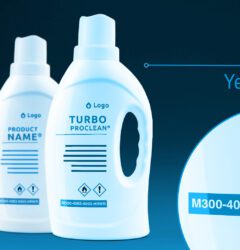Compliance in the chemical industry isn’t a one-off project. It is a constant cycle of checking data, updating documents, aligning teams and reacting to regulatory changes.
At the centre of this daily reality in the EU stand three regulatory pillars:
- Poison Centre Notification (PCN)
- Unique Formula Identifier (UFI)
- REACH
Together they form a compliance trifecta that every manufacturer, distributor and importer must handle with care. When these three are not aligned, you get conflicting data, exposure to penalties and serious risk if an emergency occurs.
This article explains what PCN, UFI and REACH actually do, how they connect in practice, where companies usually struggle – and how a platform like Chemius turns this complex set of requirements into a manageable, transparent process. How our Regulatory dashboard works you can see here in this video.
Why PCN, UFI and REACH matter so much
What is PCN?
Poison Centre Notification (PCN) is a requirement under the CLP Regulation. Its purpose is simple yet critical:
Poison centres must have all relevant information about hazardous mixtures readily available so they can react fast and accurately in case of exposure or accident.
Key PCN requirements:
- Submission of detailed formulation data, hazardous ingredients and toxicity information
- Digital submission via the ECHA Submission Portal
- The notification must be completed before the mixture is placed on the EU market
If any part of this information is outdated or missing, emergency responders may rely on incorrect data – and your company is out of compliance.
What is UFI?
The Unique Formula Identifier (UFI) is a 16-character alphanumeric code that connects a mixture on the market to its PCN submission.
This code must be printed on the product label and is the “shortcut” poison centres use to identify the exact mixture in front of them.
Why UFI matters:
- Enables poison centres to instantly identify the precise formulation of a mixture during emergencies
- Required for all mixtures classified as hazardous with health or physical hazards
- Directly tied to the corresponding PCN submission
Without a correct UFI on the label, your PCN submission cannot serve its purpose.
What is REACH?
REACH stands for Registration, Evaluation, Authorisation and Restriction of Chemicals.
It governs the safe use of substances and mixtures across their entire lifecycle in the European Union.
REACH scope and obligations:
- Registration of substances manufactured or imported in quantities of 1 tonne or more per year
- Evaluation of chemical safety, exposure scenarios and risk management measures
- Covers manufacturers, importers and downstream users
REACH is the backbone of chemical safety in the EU. It defines how substances should be understood, controlled and communicated throughout supply chains.

How PCN, UFI and REACH work together
Although PCN, UFI and REACH are different in scope, they depend on the same core ingredient: accurate and consistent data.
- REACH focuses on substance safety and long-term risk management.
- PCN and UFI focus on mixture traceability and fast emergency response.
The link between them is clear:
- Data from REACH registration feeds your Safety Data Sheets (SDS) and hazard classification.
- That classification then supports PCN submissions.
- The UFI code connects the mixture on the label to the exact PCN entry.
If your REACH, SDS, PCN and UFI data are not in sync, you are sending mixed messages to authorities, customers and emergency responders.

The real-world challenges of PCN, UFI and REACH compliance
Many companies do not fail because they ignore regulations. They fail because their data and processes are scattered.
1. Data fragmentation
Information required for PCN, UFI and REACH often sits in different places:
- R&D formulation databases
- Excel files maintained by regulatory teams
- ERP or labeling systems
- External consultants’ reports
Each update must travel through all these places. Every manual step adds the risk of mismatches between SDS, PCN submissions, labels and REACH dossiers.
2. Constant regulatory updates
REACH and CLP requirements change regularly. New substances of concern, updated classification criteria or modified formats for submission can quickly turn yesterday’s “compliant” document into today’s problem.
Without automation and a centralised system:
- Keeping SDS in line with REACH registration becomes a heavy ongoing task
- PCN submissions lag behind formulation changes
- Labels and UFIs are not updated consistently across markets
3. Cross-border and language complexity
While the framework is EU-wide, each member state may have:
- Different poison centre contact structures
- Language requirements for SDS and PCN
- National specifics that need to be reflected in your documentation
Companies working in multiple EU markets feel this the most. Copy-paste and manual edits across languages quickly lead to errors.
Why Chemius is the right way to manage PCN, UFI and REACH
This is where Chemius changes the game for regulatory and product teams. Instead of treating PCN, UFI and REACH as three separate projects, Chemius unites them around a single, controlled source of truth.
One platform, one dataset
With Chemius you manage:
- SDS authoring and versioning
- PCN submissions preparation
- UFI code generation and label data
- Regulatory information that links back to REACH obligations
When formulation data or classification changes in Chemius, the impact is visible across all related documents. This reduces the risk of one document being updated while another quietly stays outdated.
PCN creation with far less manual work
Chemius supports:
- Structured data entry for mixtures and components
- Reuse of existing information across multiple products and variants
- Generation of PCN-ready data based on your SDS and formulation records
You move away from manually assembling information for each notification and instead work from a central database designed for compliance.
Automatic UFI handling and label consistency
Because Chemius links mixtures to their compositions and PCN data, the platform can:
- Generate UFI codes correctly
- Maintain the connection between UFI, PCN and SDS
- Help ensure labels carry the right classifications, UFIs and regulatory phrases
Labels, SDS and PCN entries are no longer three separate tasks – they all reference the same underlying data.
Aligned with REACH-based information
Chemius is built with regulatory logic in mind. The platform:
- References substance information that relates to REACH registration
- Supports consistent classification and labelling
- Helps keep SDS sections aligned with the latest legal and technical knowledge
This connection to REACH data means fewer surprises when authorities review your documentation or when customers request proof of compliance.

Practical strategies to stay compliant (with Chemius at the centre)
No platform can replace responsibility, but the right system makes compliance manageable and predictable.
1. Use integrated SDS authoring software
Spreadsheets and scattered tools are not enough once you work across multiple markets, products and languages.
Chemius centralises:
- SDS authoring and updates
- TDS authoring
- PCN-relevant information
- UFI code generation
- Label data
- Chemical and products data management
- Safety instructions
- Transportation documentation
Instead of chasing files, teams work from one up-to-date platform.
2. Automate regulatory monitoring
Regulations change; your documentation must follow.
Chemius is built to:
- React to regulatory changes affecting substances and classifications
- Help you track which products are impacted
- Support timely updates so SDS, PCN and labels remain in sync
This reduces the risk of “silent non-compliance” where documents look fine on paper but reference outdated rules.
3. Train regulatory and R&D teams around shared data
When R&D, regulatory, quality and sales work in isolation, inconsistencies are almost guaranteed.
Chemius encourages a shared view of:
- Formulations
- Hazards and exposure scenarios
- Customer-facing documents
R&D understands how their decisions affect PCN and REACH; regulatory teams see changes early enough to react.
4. Centralise data for consistency
The more copies of your data exist, the harder it is to trust any of them.
With Chemius, you centralise:
- SDS versions and language variants
- PCN-related information and UFI codes
- Documentation that reflects REACH-based obligations
This reduces duplicated work and gives you better control over what exactly is on the market in each country.
FAQ: PCN, UFI and REACH
1. Can I use one UFI for multiple products? Yes, but only if these products share exactly the same composition and toxicological profile. Any meaningful change in formulation usually requires a new UFI.
2. Do REACH and PCN submissions overlap? They serve different regulatory purposes, but they share some core information, such as composition, substance identity and hazard classification. This is why using a single system like Chemius for SDS and mixture data helps both processes stay aligned.
3. What happens if I fail to update a PCN after a formulation change? Your data in the poison centre system no longer matches the product on the market. This leads to:
- Regulatory non-compliance and possible penalties
- The risk that emergency responders rely on outdated information in case of exposure
Chemius helps you track formulation changes and understand where updates are required.
PCN vs. UFI vs. REACH at a glance

Where to go from here: put PCN, UFI and REACH on solid ground
PCN, UFI and REACH are not three separate checklists. Together, they define how:
- Safe your products are,
- How clearly you communicate hazards, and
- How fast emergency services can react when something goes wrong.
Managing this with scattered files and manual updates is risky once your portfolio and markets grow.
Chemius gives you a structured way to handle the entire compliance trifecta in one place – from SDS authoring and PCN preparation to UFI code management and REACH-aligned data.
If you want to reduce manual work, cut down on inconsistencies and gain better control over your chemical compliance:
👉 Book a free demo with our team at Chemius and see how the platform can support your PCN, UFI and REACH obligations in practice. For any questions you can always write to us support@chemius.net



